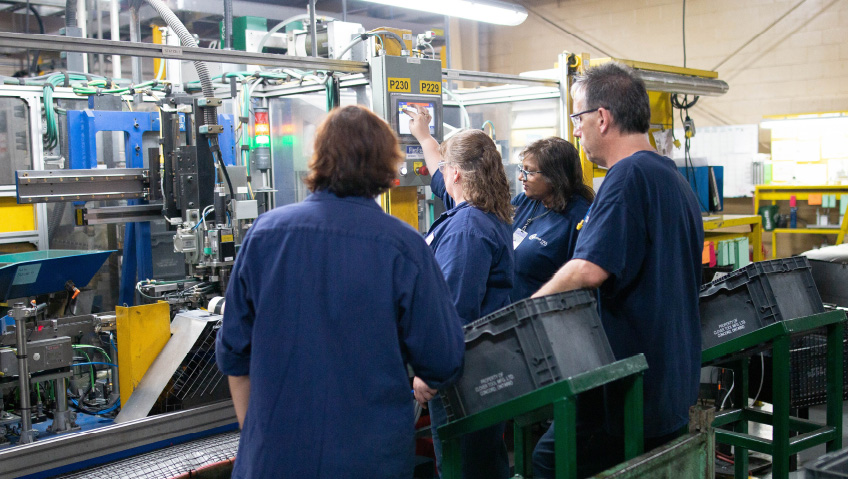Millions of tons of plastic are carelessly discarded annually, destined for landfills or leaked into the environment. Eight million tons of this plastic finds its way into the oceans each year. At this rate there will be more plastic in the ocean (by weight) than fish by 2050, the Ellen MacArthur Foundation reports.
Traditionally, the world shipped 70 percent of its plastic waste to China, NPR reports. But China has recently stopped taking the vast majority of it. This means plastic that was once recycled now goes straight to landfills, making the need to reduce plastic waste even more urgent.
In 2015, we used more than 300 million tons of plastic globally – nearly half of which was single use plastic, according to a Greenpeace East Asia report by Dr. Molly Zhongnan Jia published in December 2020. Single use plastic is designed for short-term use, making it a particularly high source of waste. Plastic bags, plastic bottles, disposable diapers, plastic cutlery, plastic drinking straws, and Styrofoam cups, plates, and takeout boxes are all popular examples of single use plastics.
Policy makers around the world have worked to restrict single use plastic to help tackle the plastic waste problem. As of 2018, 127 countries had introduced legislation to regulate plastic bags, 27 nations had banned certain single use plastics, materials or production levels, and 63 nations called for greater manufacturer responsibility for single use plastics, according to the Greenpeace report. But what will replace single use plastic? This question has become particularly challenging since the COVID-19 outbreak, which has caused a significant uptick in single use plastic use to protect public health.
Degradable plastic is a potential solution generating a lot of buzz. But what is it, exactly? And is it really as green as it sounds?
There are a host of terms and definitions regarding degradable plastics, often causing confusion among consumers. The term bioplastic is often used interchangeably with bio-based or biodegradable, but this is misleading. The Greenpeace report defines the issue in the following way:
There are two basic mechanisms for degrading plastics. The first is photo and oxo-degradation. These plastics are usually made from conventional plastics, but have additives that help the materials break down when exposed to sunlight or oxygen. Unfortunately, studies show that photo and oxo-degradable plastics can take a very long time to degrade. Even more concerning, the breakdown process is often incomplete, creating an accumulation of partially degraded plastics in the environment.
Biodegradation is the second mechanism for breaking down plastics. Biodegradable plastics are made from a variety of polymers with different origins, different chemical structures, and different properties, each of which requires specific conditions to fully biodegrade. There are over 20 types of biodegradable plastic. This list includes polymers produced using everything from natural biomass and bacterial productions to polymers chemically synthesized using agricultural resources or fossil-fuel resources.
Almost 95 percent of global production capacity comes from three groups of biodegradable plastic polymers, according to the Greenpeace report. Polylactic acid (PLA) is the best known. Starch blends and the mostly fossil fuel-based polybutylene-based polymers (this includes PBS and PBAT) make up the other two groups.
In 2019, production capacity of PLA reached around 290,000 tons, the Greenpeace report states. PLA is relatively inexpensive and boasts several advantageous mechanical properties, making it a popular option.
Starch is cheap and easily available compared to other natural polymers, making it an appealing choice. But, starch lacks strength and water resistance so it is usually blended with other polymers to achieve the necessary properties. Recent advances have made starch blends more environmentally friendly, although older, less degradable blends are still common in many countries and are frequently marketed as “biodegradable starch plastic,” according to the Greenpeace report. In 2019, the production capacity of starch blends reached around 450,000 tons.
The manufacturing process for PLA and starch blends relies on feedstock including sugar cane, corn, potato, and cassava. Scientists have worked to find other options – from greenhouse gases to agricultural by-products – but production remains dependent on feedstock as of the 2020 Greenpeace report.
The supply chain for PLA begins with feedstock manufacturing (e.g. corn farming). Next comes raw material manufacturing to extract the starch, followed by intermediate manufacturing to go from starch hydrolysis to glucose. This is followed by platform chemical manufacturing to produce lactic acid. Next is material production for conversion of polylactic acid polymer and, finally, market product manufacturing to mould polymers into packaging or other products.
This long, complex supply chain is often global, requiring numerous manufacturers across multiple countries and continents. Companies in North America, Europe, and Japan have commercialized the production of biodegradable polymers, but production has largely moved to Asia, particularly China and Thailand, the Greenpeace report states. Cost savings and the ease of sourcing feedstock have motivated the production relocation.
According to the Greenpeace report, 59 percent of biodegradable plastics were produced for packaging in 2019, making packaging their primary use. Even so, biodegradable packaging currently only accounts for a tiny fraction – just 0.5 percent – of total plastic packaging produced.
Degradable plastics are often seen as a green alternative to single use plastics and many plastic bag-banning nations allow degradable plastics. This statistic includes China, which has one of the highest plastic production and consumption rates in the world, according to the Greenpeace report. The nation has been busy putting bans in place for non-degradable single use plastics in its major cities.
But is the solution all it is cracked up to be? When we hear the term biodegradable we naturally assume it does just that. Evidence, however, demonstrates otherwise. A recent study by Imogen Napper and Richard Thompson at the University of Plymouth showed that biodegradable plastic bags had not decomposed after three years underground or in the oceans. In fact, these bags were in such good condition they were still able to hold over two kilos of materials, The Conversation reports. Biodegradable bags exposed to sunlight fared better, but had not fully degraded.
Furthermore, the term biodegradable is not synonymous with natural or safe. While most biodegradable plastics are manufactured from plant matter, the manufacturing process uses additives and plasticizers. A recent study analyzed bio-based and/or biodegradable plastic products in Europe and discovered that 80 percent of the products tested contained more than 1,000 chemicals, the Greenpeace report states. 67 percent of the tested products contained hazardous chemicals.
Oxo-biodegradable plastic is a particular problem. These plastics have additives that allow the plastic to react with oxygen and break down. But these products may not biodegrade as completely as claimed, The Conversation reports. Instead, they may break down into microplastics that pollute the environment and leak toxic chemicals which can potentially make it into the food chain. In response, the EU is already working to restrict the use of these plastics.
Biodegradable plastics can be a step in the right direction, but they are not the magic bullet they are sometimes touted to be. They do not displace the need for a circular economy for plastic. This is a system in which materials circulate within a closed loop to be used indefinitely, rather than short-term. For this to work, products have to be designed for maximum use, rather than mere convenience.
“We need to rethink the way we make, use, and reuse plastics, essentially redesigning the system in which the material is used,” the Ellen MacArthur Foundation explains. This will require three key actions: one, eliminate harmful and unnecessary plastics; two, continue to innovate to create better solutions for reusing, recycling, or composting plastics; three, circulate all plastic items, keeping them in the economy and out of landfills and oceans.
A global problem requires a global effort. While we have yet to find an ideal solution, nations across the planet are working together to help alleviate the problem by creating and improving biodegradable options. It’s a good place to start, even if we still have far to go.






